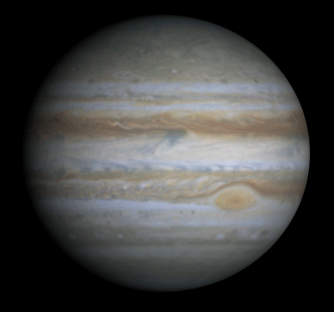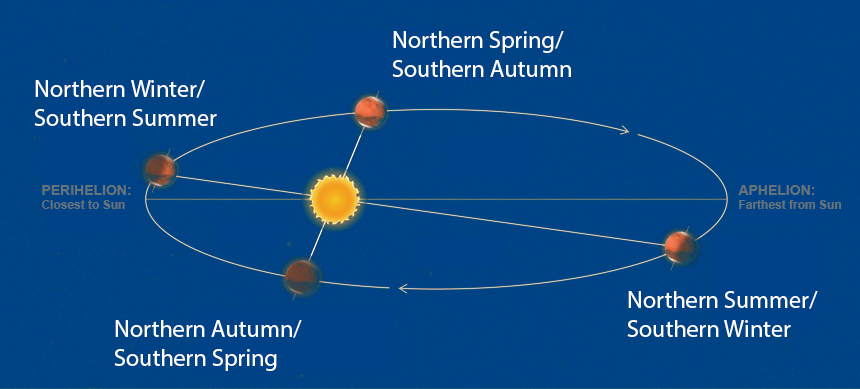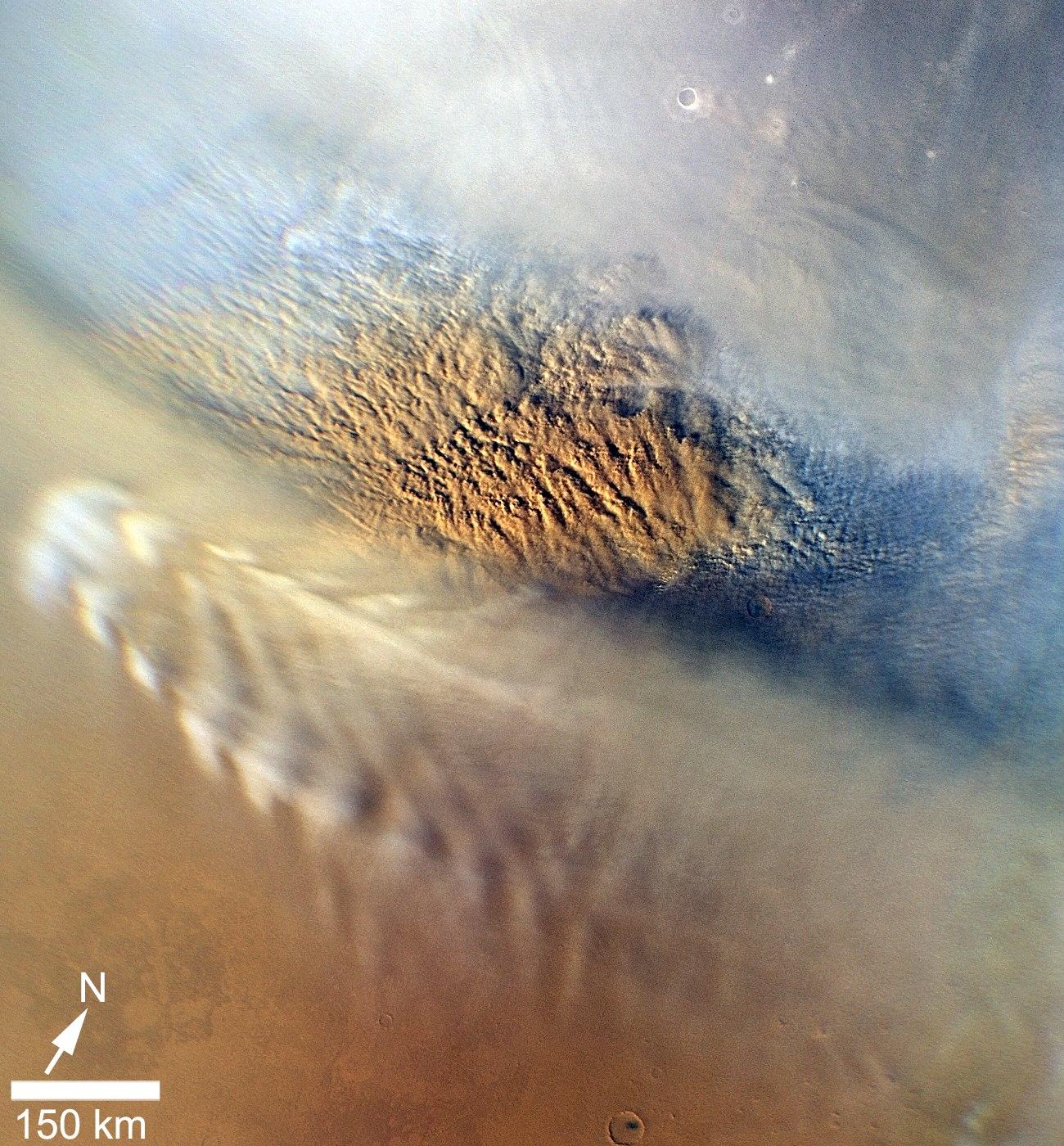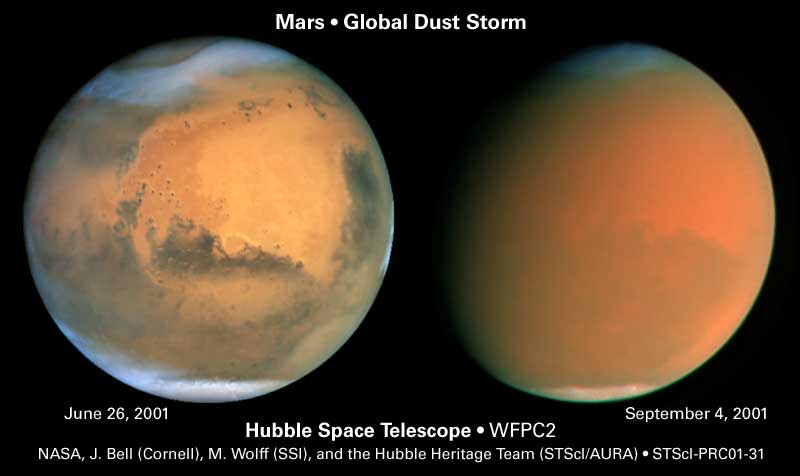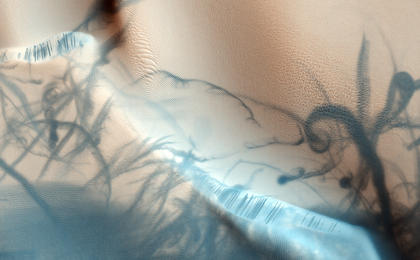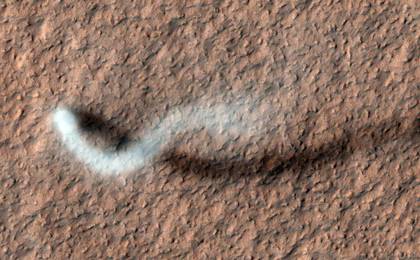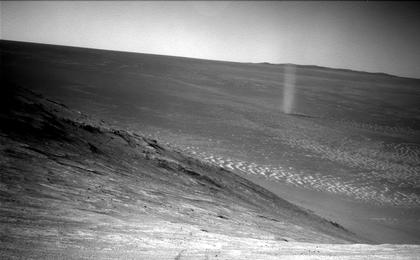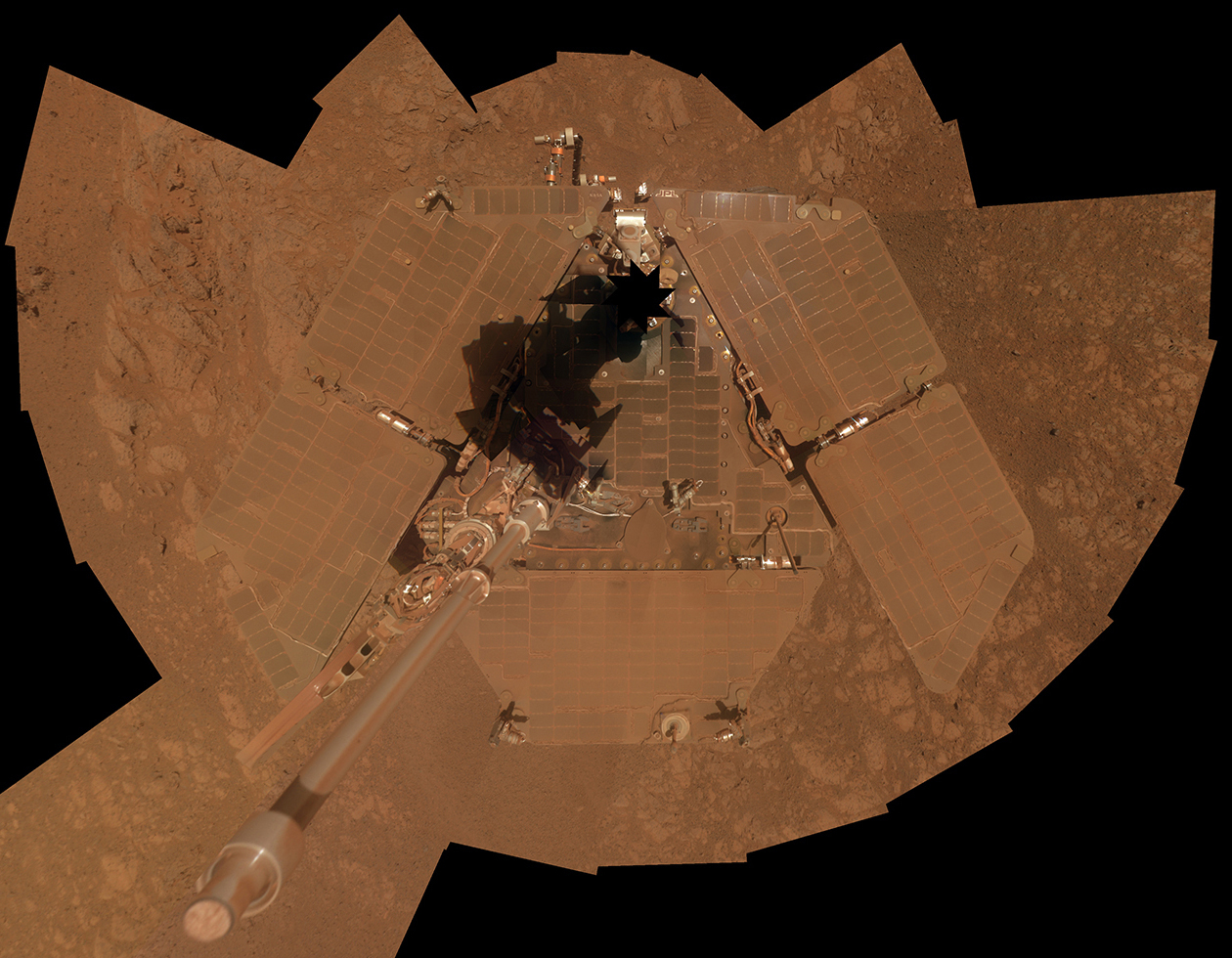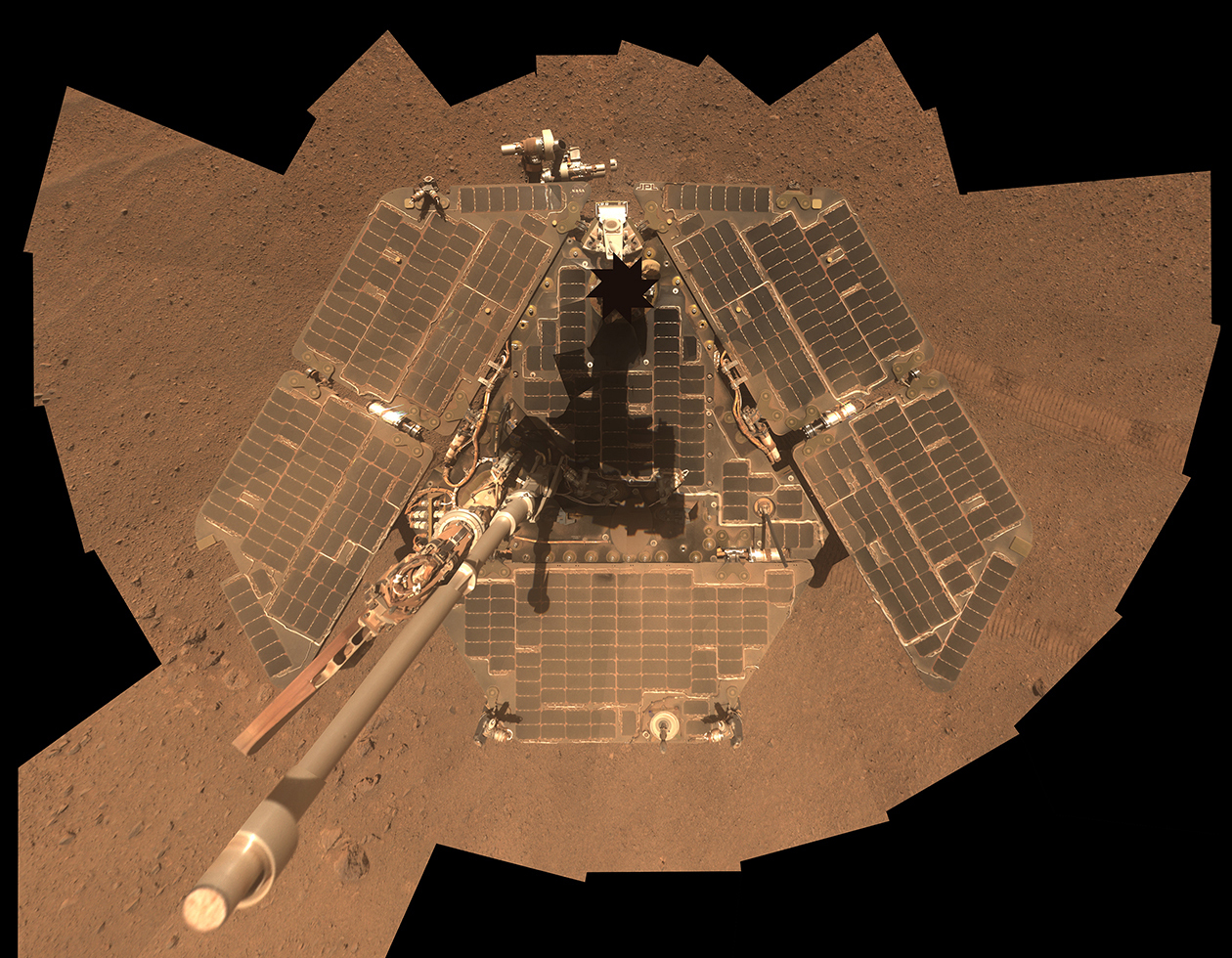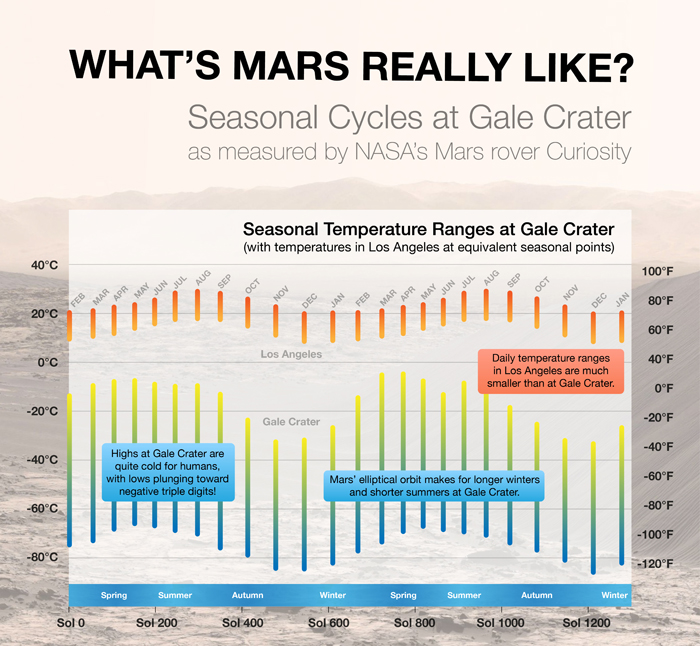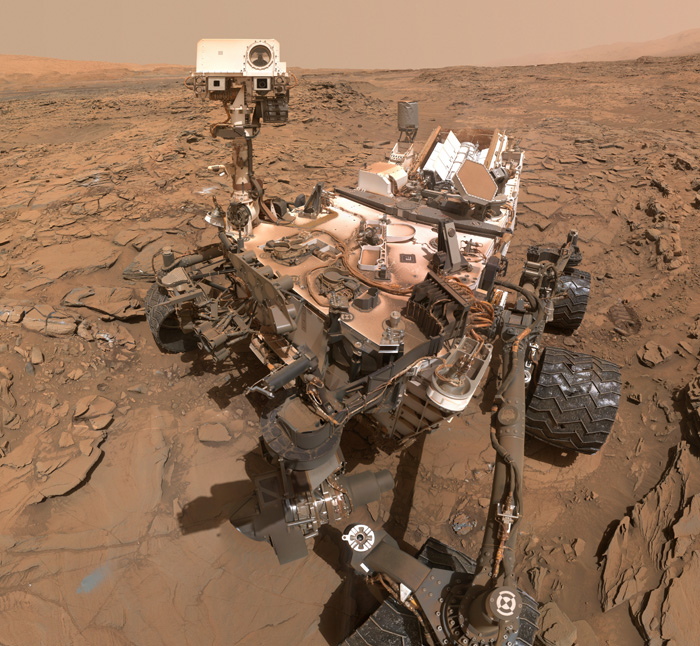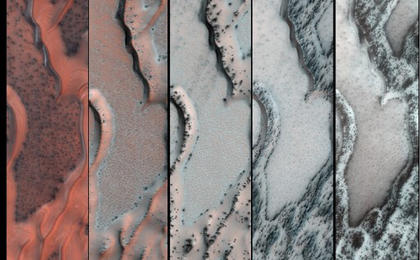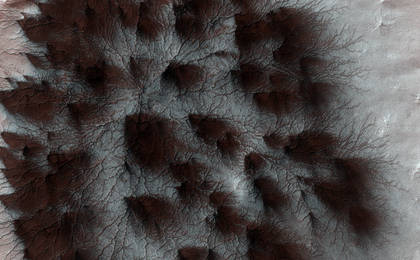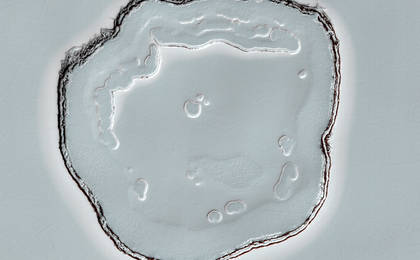
July 4 2016 Juno Arrival at Jupiter and
First Day of Spring for Mars Rovers Curiosity and Opportunity!
On July 4, 2016, NASA's Juno spacecraft arrives at planet Jupiter. That same day marks the start of Spring in Mars' southern hemisphere (spring equinox), where Mars rovers Curiosity and Opportunity are exploring.
So, what is spring like on Jupiter and Mars? Song lyrics may be all about romance, but spring is extreme on these two other worlds!
What is Springtime Like on Jupiter?
Springtime on Jupiter lasts three Earth years. Seasons are longer on Jupiter because it takes about 12 Earth years to orbit the Sun. Even though spring is long, you'd have to be very close to the north or south pole to notice much of a difference between Jupiter's seasons.
That's because Jupiter's equator is inclined only a very small 3 degrees from the plane of its orbit around the Sun. So, a spring day on Jupiter is pretty much like all the rest. That's different from Earth and Mars, which tilt on their axes by about 23.5 and 25 degrees respectively.
So, what is spring like on Jupiter? Within the visible top of Jupiter's clouds, there's no relief from Jupiter's strong winds. They routinely blow at speeds greater than Earth's most powerful storms. Beneath the clouds, the winds are even more ferocious, clocked at 380 miles per hour.
Jupiter has less lightning than our home planet, but any springtime lightning on Jupiter would be hundreds of times more powerful than a lightning bolt on Earth.
Colorful clouds of water, ammonia, and sulfur compounds brighten the spring sky just as they do the rest of Jupiter's year.
What is Springtime Like on Mars?
The southern hemisphere of Mars has a warmer, shorter spring and summer than in the north, as Mars is closest to the Sun towards the end of southern spring. Southern winter is longer, and the seasonal south polar cap is more extensive. That's because Mars is farthest away from the Sun then, moving more slowly in its elliptical orbit around the Sun. We don't notice such differences on Earth, because our planet has a near circular orbit. Going from a colder winter to a warmer spring can be quite dramatic.
Spring on Mars is the start of the large dust storm season.
Small dust storms can occur in any season. During southern spring and summer, dust storms can brew in one area of the planet.
They grow into regional events and occasionally become planet-wide storms.
Global dust storms can blanket the whole planet, warming the atmosphere and obscuring all of the surface except the tops of the tallest volcanoes.
Orbiters tell us a lot about the scope and frequency of storms and can provide alerts to solar-powered rovers on the ground.
Scientists are still puzzling over why only a few storms grow into planet-wide events.
It’s an important thing to know for mission planning – especially so we know how to prepare humans when astronauts go to Mars someday.Dust devils can also swirl across the surface. They lift dust from the surface, revealing darker terrain below.
For Opportunity, spring always comes as a welcome relief!
Sometimes, dust devils even lift dust off of rover solar panels! More dust equals less sun and reduced power for operations, so we like to see clean panels! Even if no dust devils arrive to lift dust from its solar panels, the sun is at a higher angle. That charges the rover's battery so it can explore more, avoid "naps," and even do some work at night!
For Curiosity, spring is also the warmest time!
But don't let that fool you! Temperatures even in spring on Mars are still not that warm compared to our cozy planet Earth.
Spring on Mars also brings a lot of weird changes to the polar caps!
Martian polar caps have a lot of carbon-dioxide (dry) ice. During the polar night, as much as a quarter of the atmosphere, which is also largely carbon dioxide, is lost to the surface as frost and snow. Imagine your barometer recording a 25% change in surface pressure as the seasons change! As Mars emerges from winter, warmer spring temperatures can have a big effect. When it's spring in either hemisphere the polar cap thaws and grows smaller. Because the atmosphere is so thin, the carbon-dioxide ice skips becoming a liquid, and goes straight to becoming a gas.
As the carbon dioxide ice turns into a gas, pressure builds up under the thinning, cracking ice. The gas can burst up, sending dust from below flying and swirling. The dust settles in all kinds of dramatic patterns, from starbursts to spiders! The ground can also collapse in patterns called “swiss cheese” terrain, where a thin layer of carbon-dioxide ice partially covers a water ice block below.




